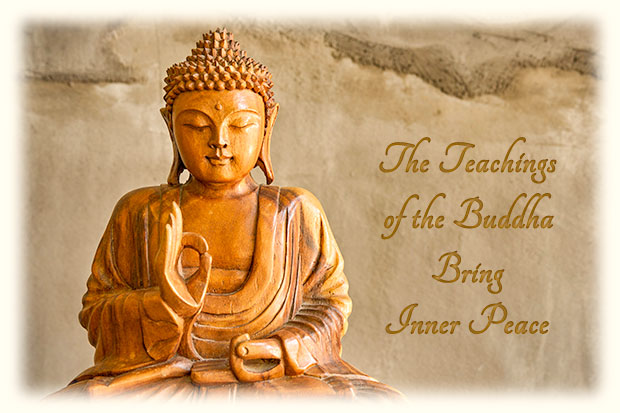

An Introduction to the Buddha's Teachings:
The Cultural Background to
the Buddha's Teachings
The Basics
It may be helpful to note here that there are many different branches, "paths" and "lineages" within Buddhism which can adhere to quite diverse beliefs. In fact, some of these lineages contain teachings that might be diametrically opposed to some of the teachings in other Buddhist Paths. (We encounter the same situation in Christianity and Hinduism). But, all Buddhists believe in Reincarnation, Karma ; the Middle Way; the Four Noble Truths; the Noble Eightfold Path; the Three
Refuges; Mindfulness, and the idea that each one of us will also some day become a Buddha. And of course, above all else, Buddhists believe in a life of loving kindness, compassion, harmlessness, wholesomeness, benevolence, detachment and mindful living. We will now explore in a brief way some of these widely accepted teachings of the Buddha.
Reincarnation
The Buddha grew up in a culture that took reincarnation for granted. Basically, reincarnation is the belief that each of us have lived many, many separate lifetimes in different physical bodies stretching back into the distant past of history. In fact, these numerous lifetimes occur not just in the physical realm, but also in many nonphysical realms. These many different "embodiments" are necessary simply because there is so much that we need to learn before we can awaken into our "Buddha Nature", that one lifetime simply does not provide enough time or variety of life experiences to learn it all. Please go here if you would like to learn more about: "Reincarnation".
Are there any other reasons for needing so many lifetimes? Yup, there's a little thing called "karma".
Karma
The idea of karma is accepted in all schools of Buddhism. Please click here to learn about the universal teaching of karma which is found in so many different religions and spiritual paths: "Karma".
The "Three Baskets"
Soon after the Buddha died, or as Buddhists call it - achieved "Parinirvanna" - his closest followers held a large gathering to formulate his teachings so that they could be accurately passed down to future generations. His chief disciple, Ananda, who had been with him during most of his 45 years of teaching and who had an excellent memory recited all the Buddha's core teachings. Other monks, nuns & lay devotees added their memories. The material was then divided into three different categories called "The Three Baskets", or "Tripitaka". The Buddhist section of this website contains the essence of those teachings which are accepted most all Buddhist schools & traditions.
The Middle Way (Avoiding Extremes & Fanaticism)
One of the first things the Buddha taught was that it is counterproductive to be fanatical in our spiritual practices, especially when practicing extreme austerities. As we know, he learned this from his own direct experience, when he almost died of starvation from extreme fasting. He had discovered that instead of helping one's spiritual progress, these extreme practices actually hinder our spiritual progress and send the "wrong message to others", while simultaneously damaging our health. He explained that from now on, it would be wiser for people to practice the "Middle Way" or "Middle Path" in which one neither foolishly indulgences in unbridled pleasurable extravagances, nor engages in self-destructive extreme austerities such as excessive fasting or other fanatical beliefs or practices.
Teaching By Example
One of the things that the Buddha emphasized, was that he was just an ordinary human being, just like the rest of us, and that his teachings were so simple and practical that each one of us can successfully apply them in our own lives.
At this point, one might ask, "But, what are the benefits to following his teachings? Why should I make the effort?" We need to look no further than the Buddha himself, to see the rewards. He always radiated an aura of gentle inner peace and soft spiritual bliss. In fact, more than anything else, the Buddha is a beautiful example of the inner peace, contentment, and happiness that we too can gradually learn to acquire and experience everyday of our lives.
So what are these teachings that can gradually bring about this soft, sweet, blissful state of freedom from worry, anxiety, and suffering? Let's start with his basic introduction which he called The Four Noble Truths.
* * *

* * *
Back to the Buddha's Path Table of Contents
* * *
Copyright 2020 Bill Gaum All Rights Reserved